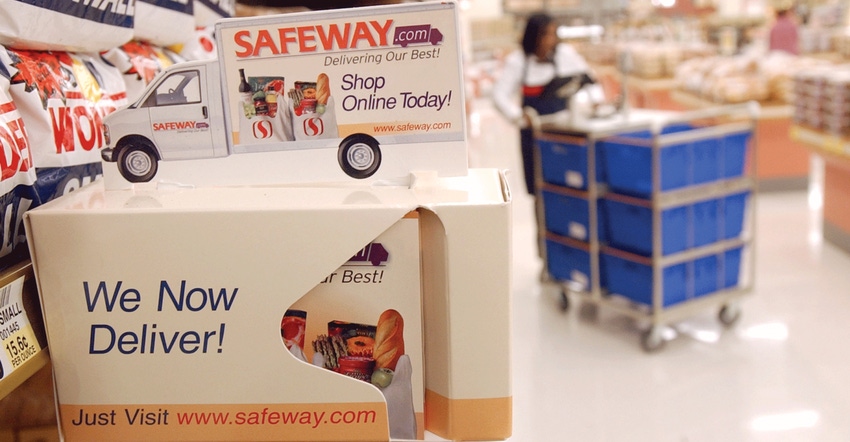As more shoppers turn to online shopping, how will the industry continue to entice consumers to choose beef?
September 22, 2020

For the last couple of years, our family has enjoyed the convenience and time-saving option of online shopping with local pickup.
With three kids in carseats, this mom much prefers shopping online. My routine is typically shopping on the couch with my laptop after the kids have gone to bed. I’m able to stick to my budget because I can see the exact total before confirming the purchase. And I can easily pick up my items by simply calling the store once I have arrived on site. Within minutes, my bags are loaded into my car, and I’m off to do the next errand. It’s a win-win for our family.
For grocers, online shopping opens up new opportunities for increased sales, but it also comes with challenges and new training requirements. Employees must do the shopping, which takes their time and attention away from assisting in-store customers or stocking shelves.
Grocers also lose that coveted up-selling with impulse buys like candy, flowers, seasonal items or higher-end customer favorites found on the ends of aisles and near the checkout lanes. Inventory must not only be tracked in the store, but online, as well. Items not available for the online shopper may be frustrating. And getting home to realize you are missing items you thought you had purchased can put a monkey wrench in those carefully crafted meal plans.
Yet, with these challenges, it seems the forward-moving trend will lean toward online grocery shopping. Turns out, I'm not the only 30-something mom taking advantage of online grocery shopping.
According to Russell Redman for Supermarket News, “Online grocery will swell to 21.5% of total U.S. grocery sales by 2025, more than doubling its current share of the overall grocery market, a new study by grocery e-commerce specialist Mercatus and research firm Incisiv projects.
“For 2020, online grocery’s percentage of the $1.04 trillion grocery market is pegged at 10.2%, or about $106 billion, up from 3.4%, or $34.54 billion, of the $1.02 billion market in 2019. By 2025, online grocery’s dollar share stands to climb to $250.26 billion of the estimated $1.16 trillion overall grocery market.”
So what does that mean for beef producers? Much like we had to adapt to selling consumers roasts, burgers and steaks that they would be preparing at home instead of enjoying on-the-go or at restaurants, we must also begin thinking like an online shopper compared to the mom pushing the cart up and down every aisle of the physical store.
How do we help grocers sell our higher-priced steaks online? How can we push our readily-available recipes, cut selection tips and creative ideas for at-home cooking? How can we hype the enticing look of a well-marbled steak that is typically viewed in the meat case when shoppers are now looking at a stock photo online? And how can we ensure our consumers have a positive eating experience every single time?
While there are many national campaigns or strategies that might be implemented, these questions might best be answered on a local level. Next time you stop into your local grocer, ask them what challenges they face in moving beef product during this COVID-19 pandemic and with this new trend of online shopping? Their insights might surprise you and could give us ideas on how best to proceed moving forward.
The opinions of Amanda Radke are not necessarily those of beefmagazine.com or Farm Progress.
About the Author(s)
You May Also Like




.png?width=300&auto=webp&quality=80&disable=upscale)
